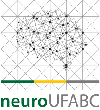Banca de QUALIFICAÇÃO: VICTOR DISTEFANO WILTENBURG
Uma banca de QUALIFICAÇÃO de MESTRADO foi cadastrada pelo programa.DISCENTE : VICTOR DISTEFANO WILTENBURG
DATA : 25/02/2021
HORA: 14:30
LOCAL: por participação remota
TÍTULO:
Therapeutic effect of ayahuasca in ethanol addiction and possible molecular mechanisms
PÁGINAS: 80
GRANDE ÁREA: Ciências Biológicas
ÁREA: Farmacologia
SUBÁREA: Neuropsicofarmacologia
RESUMO:
Drug addiction is a problem that affects both the addict's life and society. Ayahuasca is a brew used in religious ceremonies, prepared using two plants, Psychotria viridis, which has the hallucinogen DMT, and Banisteriopsis caapi, which has β-carboline alkaloids that inhibit monoaminoxidase, decreasing the metabolism of DMT. Some observational and experimental studies suggest that ayahuasca may be useful for preventing or treating drug addiction. The objective of this study was to evaluate the effect of pretreatment with ayahuasca in animal models of ethanol dependence. The alkaloids contents in the tea sample were quantified by HPLC coupled to a mass spectrometer (HPLC-MS/MS). Swiss albino mice, male, aged 3-5 months were used. The drug pharmacological profile was assessed through screening tests (n=10/group) administering water (control, C), ayahuasca lyophilized (AL, 650, 3560, 5000 mg/kg and ayahuasca tea (AT, 650 mg/kg). The same animals were evaluated for motor activity in rotarod at 12 RPM. Mice (n=10/group) were evaluated in the conditioned place preference model (CPP) and received water (C), AT (650 mg/kg), AL (130, 650 and 1950 mg/kg) by gavage, while 2 g/kg ethanol (20%, ip) and saline (0.9%, ip) were used in the conditioning days. Another group of mice (n=8/group) was evaluated on the test of ethanol-induced sensitization. The animals received daily water or AL 650 and 1950 mg/kg administered by gavage and ethanol (2 g/kg, 20%)or saline administered by ip route for 14 days. The results were analyzed using t-Student, ANOVA, Mann-Whitney U, Wilcoxon tests followed by Tukey's test as post-hoc, with statistical significance set at p<0.05. The dosage of the main alkaloids in AT presented the following concentrations (mg/mL): harmine (2.19), harmaline (0.21), tetrahydroharmine (1.66) and DMT (0.07), which are compatible with those reported in literature. On the pharmacological screening, only the mice treated with the highest dose (5 g/kg) exhibited qualitative behavioral changes and decreased locomotor activity, showing that doses from 130 to 1950 mg/kg were suitable for pre-clinical testing. In the CPP test, the animals did not show any preference in the arena on the basal evaluation, but after pretreatment with ayahuasca and ethanol conditioning, only the control group showed conditioned preference comparing the unpaired (UPR) and paired (PR) environment (UPR/PR): C= 311±47 / 371±44*, p=0.048; AT650= 266±83 / 391±120; AL130= 320±36 / 326±58; AL650= 339±140 / 346±114; AL1950= 316±54 / 321±96, suggesting that ayahuasca blocked the CPP induced by ethanol. In the behavioral sensitization, the comparison between day 01 and 14 of each experimental group, showed difference only in the groups AL650:saline (p=0.023) and water:saline (p=0.048) but no difference was observed in the groups that received ethanol, including the control (water:ethanol) group. Despite the fact that 14 days of ethanol treatment did not induce sensitization, these partial results support the hypothesis of the therapeutic potential of ayahuasca. Currently, the brain of the animals is being analyzed by immunohistochemistry with specific antibodies to elucidate possible molecular pathways and to assist in future discussions.
MEMBROS DA BANCA:
Presidente - Interno ao Programa - 1762353 - MARIA CAMILA ALMEIDA
Membro Titular - Examinador(a) Interno ao Programa - 1893240 - RAQUEL VECCHIO FORNARI
Membro Titular - Examinador(a) Externo à Instituição - KARINA POSSA ABRAHÃO - UNIFESP
Membro Suplente - Examinador(a) Interno ao Programa - 1994696 - SILVIA HONDA TAKADA




